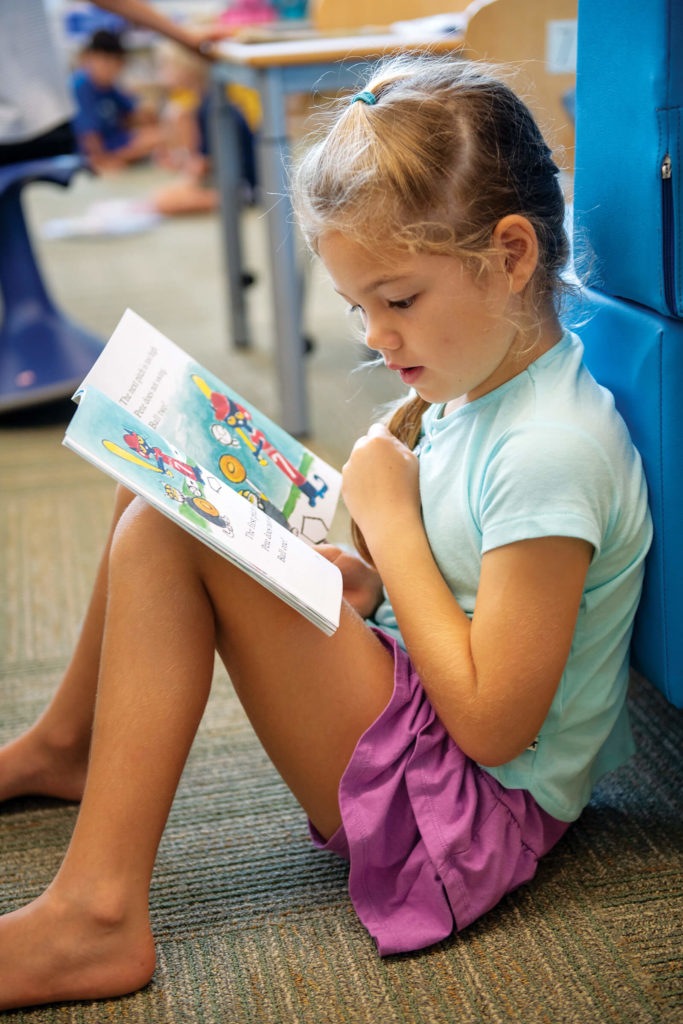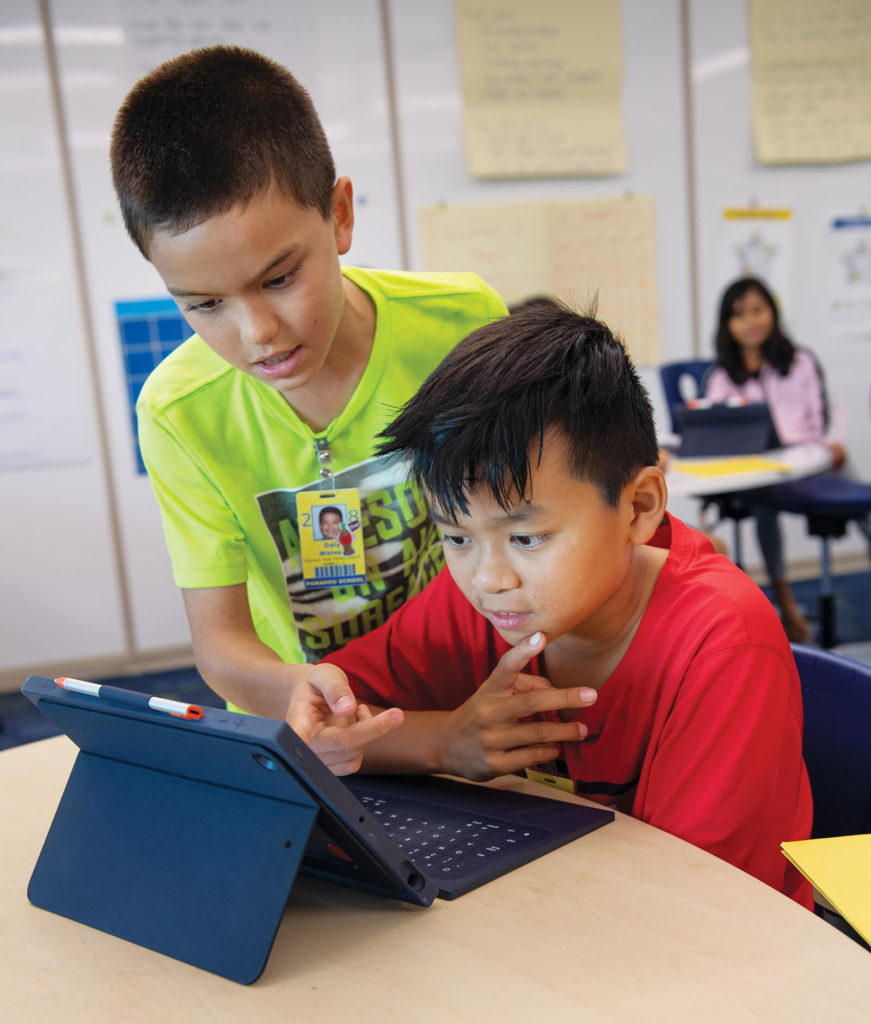By Christine Thomas

After discussing an article about octopuses, 25 children in Rebecca Wagner’s fifth-grade class are working in small groups to annotate an article about the pros and cons of serving chocolate milk in schools. She then sends students off for a 30-minute deep dive into independent reading and annotation practice. Instead of reading chapters of the same book at home, students are given personalized reading assignments during class, so they can seek help and Wagner can track their progress.
“I’m giving explicit instruction, and we’re practicing it together, but then I’m releasing them,” she said.
This is Punahou’s Teacher’s College Reading Workshop curriculum in action, officially launched last fall to kindergartners through fifth graders, after classroom pilots and targeted professional development for faculty. The reading curriculum was implemented in the Junior School, along with a revised math curriculum for students in kindergarten through grade eight.
Whereas reading instruction was previously more focused on fiction and in shorter blocks of time, students now spend an hour each day reading and moving through both fiction and nonfiction units. While there are set reading targets and specific skills taught at each grade level, students are provided personalized instruction based on their individual reading levels.
Student progress is also regularly tracked through fluency and comprehension assessments, so teachers know what skills need to be targeted and how each student is progressing. This also helps keep parents informed about their children’s progress and what they are learning.
“When you personalize reading instruction, you have better outcomes for kids because you’re not missing the gaps,” said Junior School Principal Paris Priore-Kim ’76. “The whole class isn’t moving to the next book, and you have a super clear idea of what Jane is struggling with or what components of reading Jack hasn’t quite mastered yet.
“We really want to provide equity of access to the critical skills for every child. That’s why we are moving in this direction of consistency across classrooms and alignment through grades.”
Wagner has been utilizing elements of the reading curriculum over the past four years and believes wholeheartedly in the approach. “I’ve seen the payoff,” she said. “The kids are more excited about reading. They have better understanding about texts. They know that they’re reading for enjoyment or for information, but also that it’s deeper than that.”
Addressing Needs of All Math Learners

To teach her fourth graders about adding and subtracting fractions, faculty member Pamela Fox introduces a “solve and share” activity, employing a technique from the K – 8 Pearson Math Curriculum that made its debut at Punahou last fall.
“We start with a short instruction, then students go off and try,” said Fox, who piloted the new curriculum during the 2018 – 19 school year. “We stop and check in, and then they go off and try some more.”
While adopting a new curriculum can be challenging, the payoff for the math program is clear, Fox said. “I saw the results immediately.”
The Pearson curriculum invites students into the language of math – building from concrete to more abstract concepts within each unit, and at each grade level. “Think of it as a spiral within a spiral,” Fox said.
A typical math lesson might involve students working in groups – using whiteboards and other touchable tools – to solve word problems, before transitioning to individualized problems that Fox selects for them. And similar to the new reading curriculum, student and class progress are tracked so teachers can adjust lessons based on which skills have been mastered or need reinforcing.
The program is designed to provide a full toolbox of concrete and abstract strategies, so students gain a thorough understanding of the math they’re learning. It also sets math targets across the Junior School that lead to a progression of acquired skills.
“What we’re trying to produce are students who can make connections, see the math visually, and represent it in ways that make the most sense to them,” says Junior School Assistant Principal Todd Chow-Hoy. “Teachers have the opportunity to be flexible and build in other pieces to address needs of all learners.”
